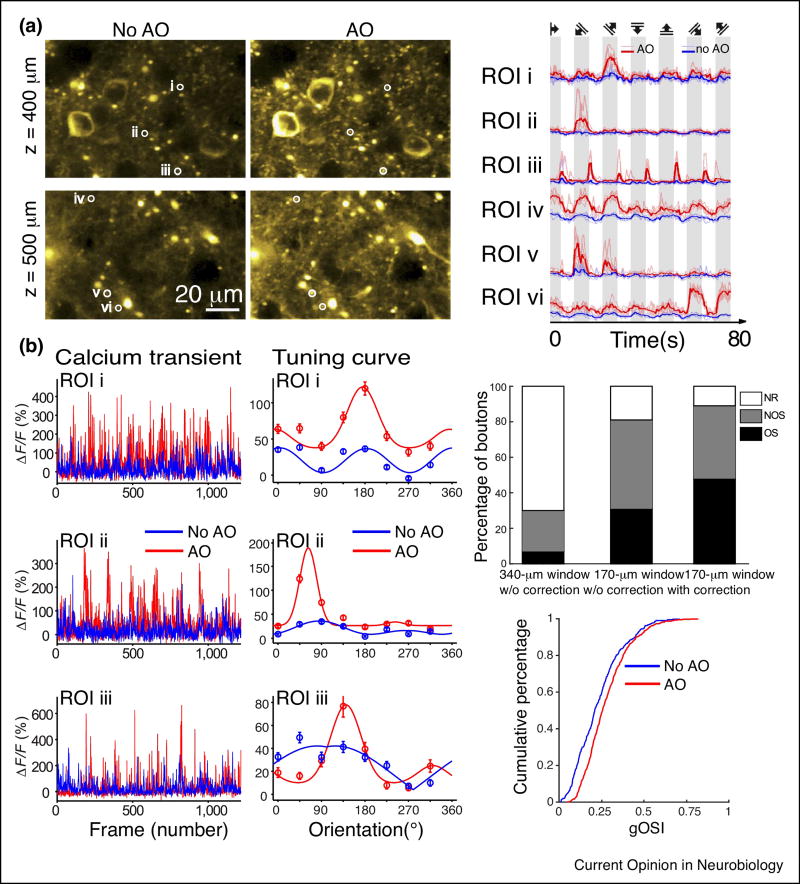Figure 4.
Adaptive optics improves the accuracy of calcium activity measurements. (a) Calcium transients evoked by the stimulation of a drifting grating, 400 and 500 µm below pia in the primary visual cortex of a mouse (Thy1-GCaMP6s line GP4.3) without and with AO correction (left panel). Calcium transients at regions of interest (ROI) i–vi, without and with AO correction (right panel). (b) Calcium transients (left panel) and tuning curves (center panel) for three different ROIs taken from images of GCaMP6s+ thalamic axons without and with AO, at a depth of 170 µm. Percentages of non-responsive (NR), not orientation selective (NOS), and orientation selective (OS) boutons; and cumulative distributions of global orientation selectivity index (gOSI) for boutons measured without and with AO (right panel). Cranial window thickness is 170 µm.

